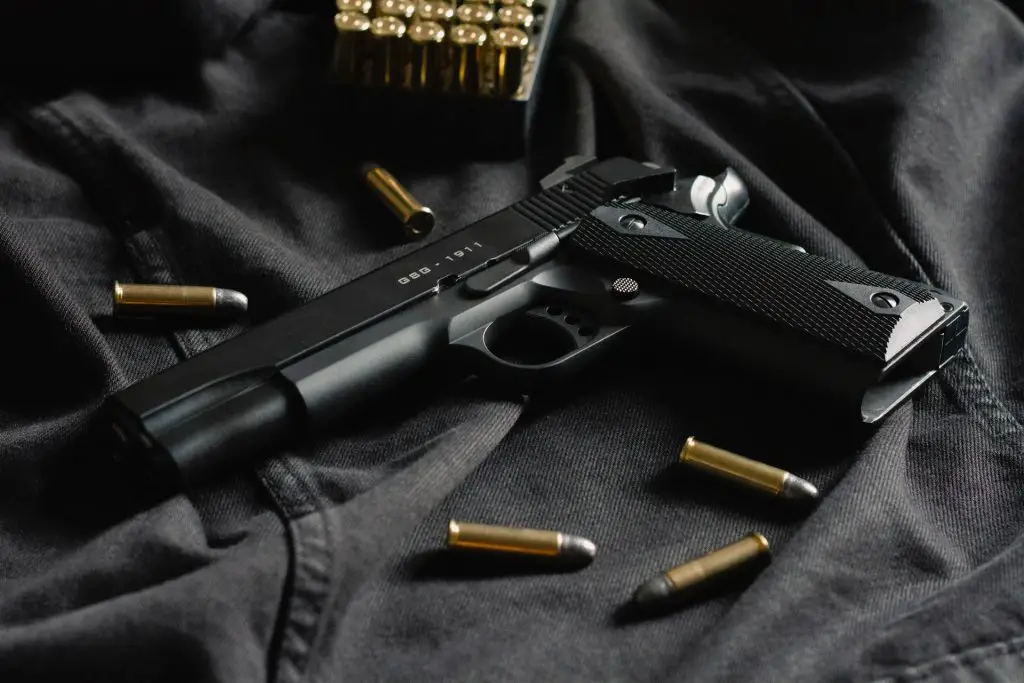Vortex is a significant figure in the firearm optics industry, producing a wide variety of options such as riflescopes, red dots, rangefinders, binoculars, spotting scopes, tripods, and monoculars, and also a variety of equipment and devices.
The Vortex Venom and the Vortex Viper are two of the many high-performance available options. Both of these versions are miniature Red Dot sights for use with pistols and rifles Both the Venom and the Vortex Viper are simple to use and designed to resist recoil and attack effects.
These reflex sights are ideal for handgun, sniper rifle, pistol, and shotgun use in virtually any setting due to their layout and structure.
Vortex Venom Vs Viper Sights Review
Vortex Venom Red Dot Sights
- The Venom comes in three and Six Red Dot versions, making it suitable for both long arms and pistols. The 3 MOA red dot product is suitable for rifle accuracy, while the 6 MOA red dot design is ideal for handguns.
- The lightweight structure with top load battery control appeals to many users. This enables the sight to remain installed while the batteries are changed.
- The Venom utilizes a CR 1632 battery, which isn’t as widely available as the CR 2032. It’s just a little bit heavier than the Viper. Windage and elevation changes are extremely stylish and “make seeing a pleasure.”
- Power and dot brightness settings are easily placed on the left hand of the sight, with Ten light conditions could choose from.
- If a gunman likes it, the Venom also includes an auto-brightness mode that utilizes an atmospheric light sensor to monitor dot brightness.
- The Venom’s visibility levels are a standout feature, allowing maximum usability irrespective of illumination or context.
- The Venom Red Dot can attach to the firearm with ease, giving users maximum versatility.
Pros
- It is compact
- It has a durable lens
ViperRed Dot Sight – 6 MOA Dot
- This Viper Red Dot is a 6 MOA Dot sight that shares many of the same characteristics as the Venom. But that’s what there is to it.
- The Viper has ultra-clear lens coatings, an ultra-sleek structure with multi-coated, and the lighting functions, as well as the optional control button, are easily reached on the left-hand side.
- This design has recessed 1 MOA windage and altitude modifications and is powered by a CR 2032 battery.
- Like the Venom, the Viper has Weaver/Picatinny mounts, but it is 1.8” in length and weighs 1.1 ounces.
- This structure weighs 2.1 ounces when mounted on a Picatinny rail.
Pros
- Compact
- Shockproof
Check out
| How Do You Keep Moisture Out Of A Gun Safe? |
| How to Clean a Gun |
| What Is A Stun Gun, And How Do You Use It? |
Vortex Venom Vs Viper Sights Review – Features

Red Dot Reticle
A red light-emitting diode illuminates all lenses (LED). The Venom red dot sight comes with a Three MOA or Six MOA reticle, whereas the Viper just comes with a 6 MOA reticle. The Venom is available with 2 different reticle sizes, whereas the Viper is only available with a Six MOA reticle.
The Venom’s 3 MOA reticle renders it well suited to firing platforms wherever users want to attack targets at a medium range. A tiny reticle dot will allow for more accuracy at longer ranges. The size of the dot is a matter of individual choice but in particular, a bigger dot is better for close-quarters situations, which are quite popular with a pistol.
Operation
The optics have intuitively operated side-mounted buttons that are simple to hit Users can use these buttons to switch the optics off and on as well as change the reticle illumination levels. The Venom and Viper each have ten reticle illumination adjustments to suit a range of lighting situations
With the Venom, users get the added benefit of an automatic mode. When users put the Venom in auto-mode, the optic changes the intensity of the reticle depending on the current lighting conditions. At Fourteen hours both the Venom and the Viper would shut down. This helps to extend the battery’s lifespan. So, about the Vortex Venom vs. Viper operation, the Venom emerges victorious.
Batteries
Both the Venom and the Viper, in respect to Vortex Optics, have a battery period of 150 hours on the maximum illumination level and 30,000 hours on the minimum. A CR 1632 lithium coin battery is used in the Vortex Venom, whereas a CR 2032 lithium coin battery is used in the Viper.
The Venom’s battery storage is placed on the peak of the optic, making access and battery switches easy and quick. Close to a Trijicon RMR, the Venom’s battery storage is situated beneath the sight. This necessitates removing the sight each time the battery needs to be replaced.
Frequently Asked Questions
Is the Vortex Venom water-resistant?
Vortex Optics claims that the Venom is waterproof.
Is the Vortex Venom equipped with an auto-shutoff feature?
The Vortex Venom has an auto switch function that turns the optic off after Fourteen hours.
Want to learn more about guns and their add-ons? CLICK HERE
Conclusion
If it gets to the battery storage place, the Vortex Venom red dot sight succeeds, rendering battery switches easy and quick. For a sight of this scale, the Vortex Viper red dot sight has an outstanding field of view. The Viper often has a lightweight, making co-witnessing with rifle height iron sights simple.
The Venom has an automatic feature reticle illumination quality that allows it simple to maintain the reticle balance in any light situation. Both the Venom and the Viper can fit in most handguns with an optic mount.
Surviving in a situation seems like a daunting task if you don’t have all the information. We have compiled complete guides for you to follow in every situation. CLICK HERE to check them out.



